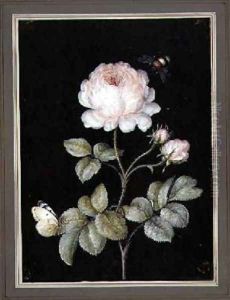Ernst Friedrich Carl Lang Paintings
Ernst Friedrich Carl Lang, born in 1748 and passing away in 1782, was a German artist whose life and career, though brief, were marked by his contributions to the art world during the 18th century. Lang's journey into the arts was shaped by the cultural and historical context of his time, which saw the flourishing of various art movements across Europe. Despite the limited information on Lang due to the era he lived in, his work has been studied by art historians who seek to understand the nuances of 18th-century German art.
Lang's artistic endeavors were primarily focused on painting, with a style that reflected the transition from Rococo to early Neoclassicism. This period was characterized by a shift in aesthetic values, moving away from the ornate and decorative towards a more restrained and classical approach inspired by the art and architecture of ancient Greece and Rome. Lang, like many of his contemporaries, was influenced by these changing tastes, and his work often depicted themes of classical antiquity with an emphasis on harmony, proportion, and simplicity.
Throughout his career, Lang faced the challenges common to artists of his time, including the search for patronage and the need to adapt to the evolving tastes of the art market. Despite these obstacles, he managed to secure commissions and was recognized for his skill, particularly in the realm of portraiture. Lang's portraits are noted for their attention to detail and the ability to capture the personality and status of his subjects, making them valuable documents of the social and cultural milieu of 18th-century Germany.
Ernst Friedrich Carl Lang's contribution to the art world, though not as widely recognized as that of some of his peers, remains an important part of the study of German art history. His works provide insight into the artistic transitions of his time and serve as a testament to the talent and perseverance of an artist working in an era of significant change. Lang's legacy, preserved through his paintings, continues to be appreciated by art lovers and historians alike, offering a window into the complexities and beauty of 18th-century art.
Regrettably, Lang's life was cut short when he died in 1782, at the relatively young age of 34. The details surrounding his death are scarce, as is common with many historical figures from this period. Despite his early demise, the body of work he left behind has allowed his name to endure, capturing the spirit of an era that bridged the Rococo and Neoclassical periods and highlighting the artistic contributions of a talent taken too soon.
